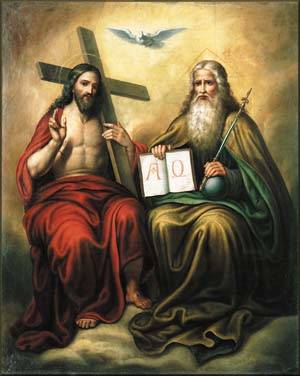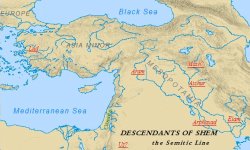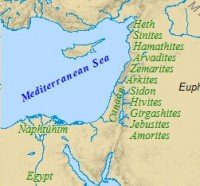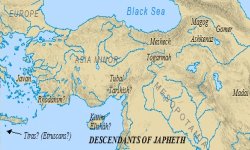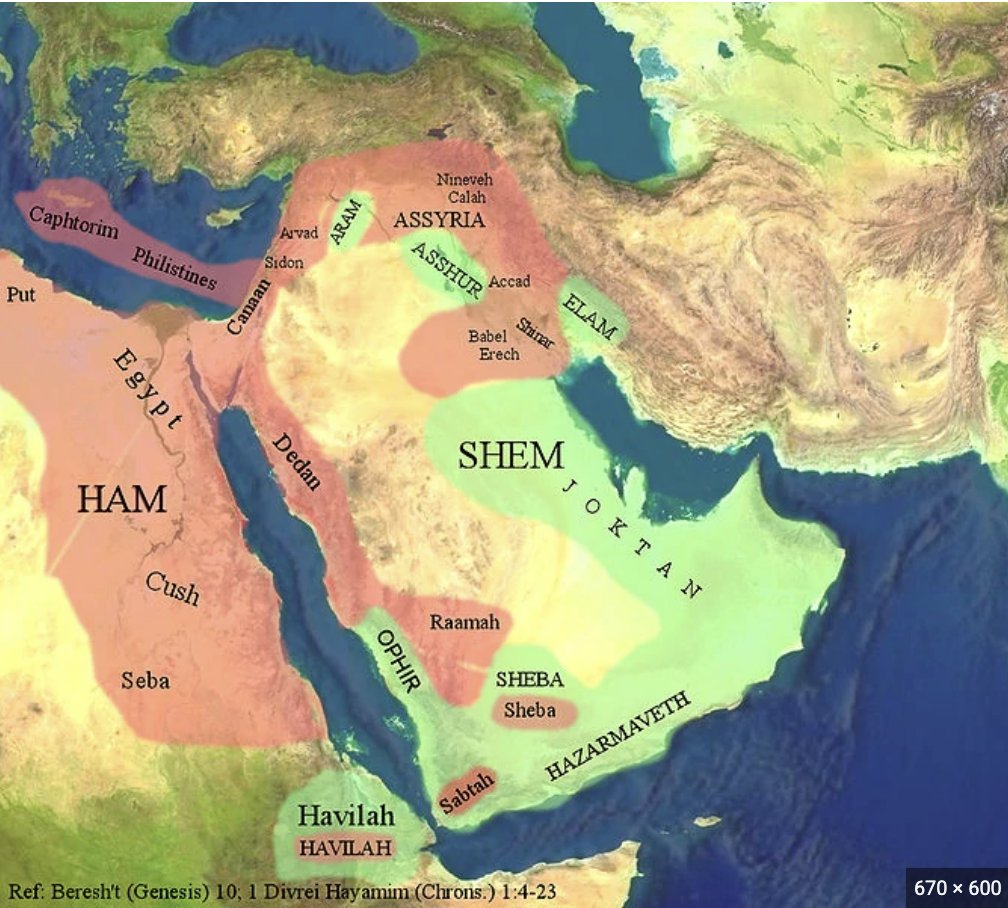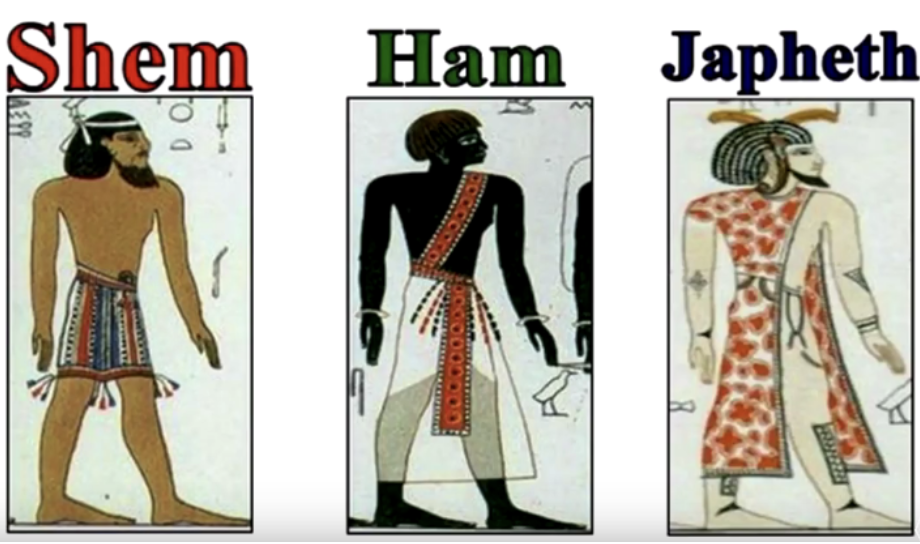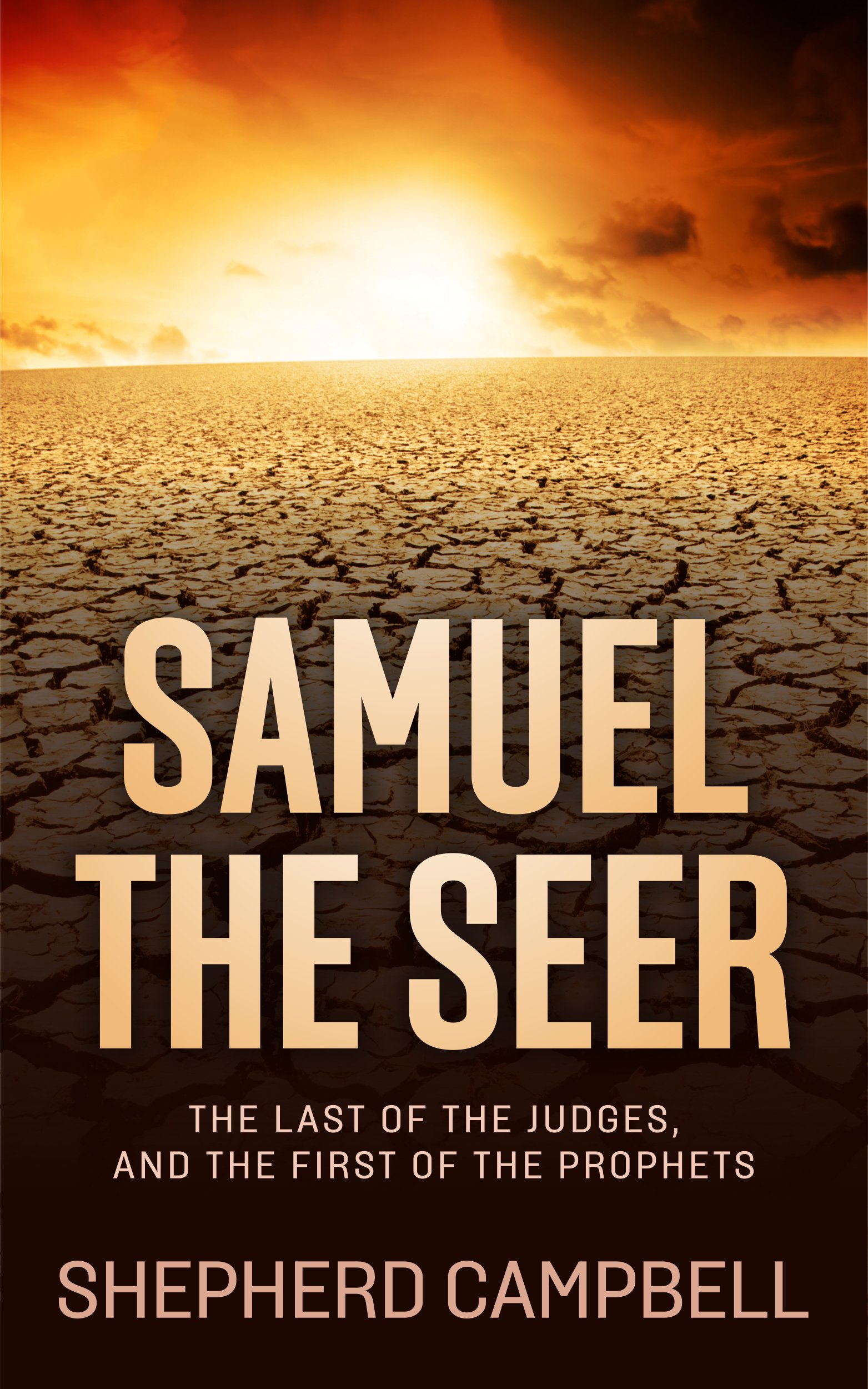VISIT OUR FACEBOOK PAGE!
Christian Trinity & Sons of Noah
The Christian Trinity, Trinitarian Dynamics and the Sons of Noah
This explanation of Trinitarian Dynamics begins with God, the Infinite One that created our finite universe. If Superstring theory is correct, the universe has at least eleven dimensions; if not, then the minimum is ten, four of which comprise our physical realm as a 4D continuum of length, width, depth, and time. The hyper dimensions, invisible to us, are also called spiritual dimensions, referenced as “heavenly places” in the KJB New Testament.
It may be wise to think of the natural and supernatural realms as having only a “dotted line” between them, since the view of physics is that the “physical” realm is a binary digital simulation—in other words, a hologram. God’s Heavenly Throne is somewhere in the heavenly places, so a question arises. How can the Infinite One be “contained” in a finite universe? Trinitarian Dynamics suggests that (1) God “projects” into Heaven as Holy Trinity for the purpose of interaction with creation, and (2) the materialistic aspects of a God-Man "in the Flesh" are compatible with a holographic universe. Pix-elated are we in 3D.
1 John 5:7: “For there are three that bear record in heaven, the Father, the Word, and the Holy Ghost: and these three are one.” Revelation 4:8 alludes to Holy Trinity, in “... Holy, holy, holy, Lord God Almighty, which was, and is, and is to come.” Elohiym in Genesis 1:26 expresses a plurality greater than two, but the verse uses a singular verb for “make,” thus implying the Trinity: “And God [Elohiym] said, Let us make man [adam] in our image, [tselem] after our likeness [dmuwth]: and let them have dominion over … all the earth ….” God, having dominion over all the universe, gave the first couple the whole earth for a domain. That is one way of being “like” God; but they forfeited dominion, and fell into mortality—plan B, which God had already defined for a more glorious purpose: “That in the ages to come he might shew the exceeding riches of his grace in his kindness toward us through Christ Jesus” (Ephesians 2:7). (In Hebrew, Genesis starts with a B. Coincidence?)
The word tselem (translated as “image”) can mean a projected representational phantom, i.e. hologram; but may primarily refer to an aesthetic feature built into human nature to hold an affinity for the Golden Section (i.e., Golden Ratio, Golden Spiral), a feature found everywhere in nature, including the human body. Fibonacci Numbers express the gamut of Golden Sections found in the universe. Mankind echoes this approximate 1-to-1.6 ratio in the Golden Rectangle when building and manufacturing: the shorter side is to the longer side as the longer side is to the sum of the two. We are “like” God in appreciating the sight of Golden Sections. In nature, however, the ratio is also a sustaining, optimizing function.
Christian Trinity in Genesis
What is God’s likeness? Dmuwth can mean model, i.e., a unified Trinitarian Architecture. 1 Thessalonians 5:23 expresses human architecture: “And the very God of peace sanctify you wholly; and I pray God your whole spirit and soul and body be preserved blameless unto the coming of our Lord Jesus Christ.” The Christian Trinity concept is the basis of this "likeness". In other words, there is a divinity in God's likeness.
Each of us is a trinity. Each has (1) an invisible inner core (usually called “heart”), realm for the human nature spirit; (2) an invisible mind for the existential, self-aware soul; and (3) a body for sensibility, communication, and visibility/mobility. Impetus (or generator) for creativity/destruction, abstraction, and evaluation are functions of the spirit, which gives life. Emotions, thoughts, and will are in the domain of the soul’s mind, which exists in the ever-present now. Einstein said that the three divisions of time are “persistently stubborn illusions”; but we are designed to live in a time domain, wherein past, present, and future have logical connection and meaning, even though only the present seems actual. Eternity is the ever-present now, literally timeless. Forever, in contrast, is merely a concept of time stretching out to an everlasting future. The body houses and carries the soul through events in time/space, where physicality works according to natural laws. Events of human endeavor also proceed from the dynamics of impetus to idea to manifestation.
Mind does not equate to brain. Research in vision and hearing has determined that the mind uses invisible dimensionality. Indeed, we know that we see and hear in dreams without using eyes and ears. The brain is essentially a digital/analog data transformer, like a black box controller for input/output data used by the soul/mind for interaction with other beings and the physical environment, which includes one’s own body. The soul/mind is the seat of being and identity, but it takes all three parts to make one fully sentient in a physical realm. For example, the word “feelings” has connotations for all three parts of human architecture.
|
“3D” TRI-UNITY DESIRE: CONSCIENCE: CHOICE: |
SPIRIT (HEART DOMAIN) IMPULSE TO CREATE OR DESTROY ABSTRACTION EVALUATION |
SOUL (MIND) EMOTION THOUGHT/MEMORY WILL/DECISION |
BODY SENSIBLITY COMMUNICATION MOBILITY/VISIBILITY |
The row headings and color coding attempt to show a unified cube unfolded into a 2D grid. Each part of the human trinity has three main functions, and each function is “most like” or “most pertaining to” one of the three parts. We are designed to feel fully integrated. For example, literature (including the Bible) often associates emotions with the “heart.” Our analysis suggests that the spirit is the impetus, igniter, or source of emotions; but the impulses are somewhat indefinable until the soul gives “shape” to them. God and the Word of God can discern “the thoughts and intents of the heart” according to Hebrews 4:11, but apparently one cannot read the language of his own heart (or others’ either). Perhaps the language is too complex, or perhaps one’s identity needs to seem undivided in the soul.
The existential now domain of the soul affords a direct interaction with God. Isaiah 57:15: “For thus saith the high and lofty One that inhabiteth eternity, whose name is Holy; I dwell in the high and holy place, with him also that is of a contrite and humble spirit, to revive the spirit of the humble, and to revive the heart of the contrite ones.” The “with” is via SPIRIT, because that is where LIFE is. “It is the spirit that quickeneth ...” (John 6:63). In life are found the potential and potency for newness. 1st Thessalonians 5:19 holds a warning: “Quench not the Spirit.” One’s ability to stifle God’s Spirit is likely linked to the soul’s most definitive feature: free will.
The New Testament bears witness to listing God the Father first when expressing the Christian Trinity, as in Matthew 28:19: “Go ye therefore, and teach all nations, baptizing them in the name of the Father, and of the Son, and of the Holy Ghost.” The following chart alters the proper order just to show the functional sequence of trinitarian dynamics.
Holy Trinity tri-unity creative aspects “like” human trinity
HOLY SPIRIT Omnipotent LIFE DESIRE/PURPOSE spirit (nameless)
FATHER Omniscient IDEA/WILL soul (named identity)
SON Omnipresent CODE/MANIFESTION body (recognized in the world)
(Greek logos, translated “Word” in KJB)
Keeping in mind the “dotted line” between the “divisions” of trinity, feel free to list the “omnis” in a different order. Our explanation of the Christian trinity links life force, power, or potency to Holy Spirit; and sees the Son’s presence in the world in the body of His believers. The overarching emphasis is on unity of functions.
God bridges the gap between Holy Christian Trinity and human trinity in having His Manifestation begotten as the perfect God-Man, unique in all the universe. Jesus Christ in His walking-around days 2000 years ago shared Holy Spirit with the Father, and thus aligned perfectly with the Father's Will. Jesus manifested the Trinity by perfectly emanating, expressing, and demonstrating God’s love in truth and power among the people. The Son is God’s Living Word. Jesus says, “... I am the way, the truth, and the life ...” (John 14:6): Way (Body), Truth (Soul), and Life (Spirit). Making these parenthetical assignments is simply choosing which feature is “most like” which trinitarian function.
The soul is born as a blank slate. It is locked into the ever-present now, no matter what. The basic fact of existence is that the soul continues, whether in everlasting life or in everlasting death. Adam’s sin of disobedience (switching from Plan A to Plan B) brought contamination and ensuing decay into the human nature spirit, which in turns causes ill effects in the soul and body. By all the human fathers since, mortality has passed down through fallen history. The unregenerate “heart is deceitful above all things, and desperately wicked: who can know it?” (Jeremiah 17:9). The natural-born decaying spirit must be replaced—“born again.” Then one’s soul becomes restored moment by moment in the present, by Holy Word (see Psalm 23). The body will be replaced in the future resurrection & rapture. Possibly, the saved soul will be given a fresh memory slate at the start of the “new heaven and a new earth” described in Revelation 21. Verse 4 says: “And God shall wipe away all tears from their eyes; and there shall be no more death, neither sorrow, nor crying, neither shall there be any more pain: for the former things are passed away.” The regenerated spirit and immortal body could probably continue without further renewal at that point. It looks as though human transformation from mortality to immortality transpires in architectural phases—beginning with a new spirit, life’s essential reality, sometime before one leaves this world. One thing is sure: salvation was purchased by our Redeemer Jesus Christ, our Plan C for the asking. “For by grace are ye saved through faith; and that not of yourselves: it is the gift of God: Not of works, lest any man should boast” (Ephesians 2:8-9).
The four Gospels present Jesus and His missions to be culminated in His Second Coming. (See Isaiah 61:1-2.) The three "synoptic" Gospels line up with the three sons of Noah—collectively the spirit, soul, and body of post-Flood fallen man in need of salvation.
Gospel Messianic Emphasis Target Post-Flood Leadership Humanity
Matthew Messiah as King of kings Jews Shem Religion Spirit
Mark Messiah as Priestly Servant Romans Ham Science Soul
Luke Messiah as the Perfect Man Greeks Japheth Government Body
John Messiah as God among us Believers New Creature Witness New Spirit
The Bible’s first mention of Noah’s three sons is Genesis 5:32: “And Noah was five hundred years old: and Noah begat Shem, Ham, and Japheth.” Their characteristics flowed into a generalized separation of leadership. Shem's family strength was spiritual leadership. Ham's line of expertise led technical engineering and architecture. Japheth's offspring eventually enlarged their lead in observation, communication, and mobility.
Arthur Custance is known for analyzing the trinity of Noah’s three sons, but took the wrong track when he assigned “body” to Ham and “soul” to Japheth. Because the early Hamitic inventiveness has been affirmed by archeology, Custance urged his reader to separate inventive practical technology from intellectual science, and thereby assign intellectual leadership to the Japhethites. But he admitted, “Technology is often a spin-off from scientific endeavor ... .” The only way for the reader to stay on his track is to accept his flat assertion that the highly-advanced civilizations of antiquity had no curiosity or knowledge of “science in the pure sense.” He backtracked from his view of Japhethites later carrying “the torch of pure science” and eventually hijacking Hamitic technology. Thus derailed, Custance also made the mistake of limiting Gentiles to the Japhethites, and contrived a circuit of tidbits gleaned from history.*
This article will glean from the Bible and linguistics to unpack the meanings of the names of Noah’s sons looking at them in conjunction with the Christian Trinity. If the KJB team of 47 had translated Bible names instead of transliterating them, more KJB readers would know that every Bible name has a meaning. (In fact, the word “name” in the Bible is used in the sense of a title.)
Speaking of names, Shem means “name, fame, renown, hear.” Ha Shem (“The Name”) is the current Jewish label for God. The 2-letter consonant root SH-M (shin-mem) appears in other Hebrew scripture words pertaining to hearing and sound.
Examples: (a) SHaMa (shin-mem-ayin) means “publish, report, sound.” Esther 1:20: “And when the king's decree which he shall make shall be published throughout all his empire ...” Job 26:14: “Lo, these are parts of his ways: but how little a portion is heard of him? ...” Isaiah 52:7: “How beautiful upon the mountains are the feet of him that bringeth good tidings, that publisheth peace; that bringeth good tidings of good, that publisheth salvation; ...” (similar to Nahum 1:15). We are reminded of Romans 10:17: “So then faith cometh by hearing, and hearing by the word of God.” (b) SHeMeTS (shin-mem-tsadi) means “small sound, whisper.” Job 4:12: “Now a thing was secretly brought to me, and mine ear received a little thereof.”
Ham means “heat, hot anger.” The 2-letter root [K]H-M (het-mem) appears in other Hebrew scripture words about warm emotions as well as hot ones. There is a thoughtful aspect too. (The [K]H sound is a hard H, often rendered CH in transliteration, as in chutzpah.)
Examples: (a) Ra[K]HaM (resh-het-mem) means “mercy, compassion, love, pity.” Deuteronomy 13:17: “... that the Lord may turn from the fierceness of his anger, and shew thee mercy, and have compassion upon thee ...” Psalm18:1: “... I will love thee, O Lord, my strength.” Psalm 103:13: “Like as a father pitieth his children, so the Lord pitieth them that fear him.” Psalm116:5: “Gracious is the Lord, and righteous; yea, our God is merciful.” Proverbs 28:13: “He that covereth his sins shall not prosper: but whoso confesseth and forsaketh them shall have mercy.”
(b) Na[K]HaM (noon-het-mem) means “comfort, repent, console.” Genesis 50:21: “... And he comforted them, and spake kindly unto them.” Numbers 23:19: “God is not a man, that he should lie; neither the son of man, that he should repent ...” Isaiah 61:2: “To proclaim the acceptable year of the Lord, and [second coming] the day of vengeance of our God; to comfort all that mourn.”
(c) [K]HaMaL (het-mem-lamed) means “compassion, spare, pity.” Exodus 2:6: “... And she had compassion on him, and said, This is one of the Hebrews' children.” 1st Samuel 15:9: “But Saul and the people spared Agag, ...” 2nd Chronicles 36:17: “... and had no compassion upon young man or maiden, old man, or him that stooped for age ...” Proverbs 6:34: “For jealousy is the rage of a man: therefore he will not spare in the day of vengeance.” Lamentations 2:21: “... thou hast slain them in the day of thine anger; thou hast killed, and not pitied.”
(d) [K]HaMaD (het-mem-dalet) means “desire, lust, covet.” Genesis 2:9: “And out of the ground made the Lord God to grow every tree that is pleasant to the sight ...” Genesis 3:6: “And when the woman saw that the tree was good for food, and that it was pleasant to the eyes, and a tree to be desired to make one wise, she took of the fruit thereof, and did eat ...” Deuteronomy 5:21: “Neither shalt thou desire thy neighbour's wife ...” Proverbs 6:25: “Lust not after her beauty in thine heart; neither let her take thee with her eyelids.” Isaiah 53:2: “... and when we shall see him, there is no beauty that we should desire him.” Micah 2:2: “And they covet fields, and take them by violence ...”
Japheth means “to open or gain by communication.” The 2-letter sub-root PH-TH (phey-thaf), contained in Y-PH-TH (yod-phey-thaf), appears in other Hebrew scripture words that express communication. J in Hebrew is the same as Y (yod). The PH or F sound is rendered in Hebrew by the same letter that makes the P (pey) sound. The following examples include both sounds. (Note that the Hebrew word for mouth is pey.)
Examples: (a) PaTHaH (pey-thaf-hey) means “open, enlarge; figuratively entice, persuade, flatter, allure; silly.” Exodus 22:16: “And if a man entice a maid that is not betrothed, and lie with her, he shall surely endow her to be his wife.” 1st Kings 22:21: “And there came forth a spirit, and stood before the Lord, and said, I will persuade him.” (Same in verse 22.) Job 5:2: “For wrath killeth the foolish man, and envy slayeth the silly one.” Psalms 78:36: “Nevertheless they did flatter him with their mouth, and they lied unto him with their tongues.” Proverbs 1:10: “My son, if sinners entice thee, consent thou not.” Proverbs 20:19: “He that goeth about as a talebearer revealeth secrets: therefore meddle not with him that flattereth with his lips.” Hosea 2:14: “Therefore, behold, I will allure her, ...”
(b) PeTHiY (pey-thaf-yod) means “simple minded, easily persuaded, deceived by speech (as he is open-minded to anything).” Proverbs 1:4: “To give subtilty to the simple, to the young man knowledge and discretion.” Proverbs 14:15: “The simple believeth every word: but the prudent man looketh well to his going.” Ezekiel 45:20: “And so thou shalt do the seventh day of the month for every one that erreth, and for him that is simple: so shall ye reconcile the house.” Psalms 119:130 also has PeTHa[K]H (pey-thaf-het), which means “opening, entrance; figuratively disclosure”: “The entrance of thy words giveth light; it giveth understanding unto the simple.”
(c) PaTHaL (pey-thaf-lamed) means “twisted, deceitful communication.” Job 5:13: “He taketh the wise in their own craftiness: and the counsel of the froward is carried headlong.” Proverbs 8:8: “All the words of my mouth [pey] are in righteousness; there is nothing froward or perverse in them.”
(d) PaTHaR (pey-thaf-resh) means “open up; figuratively to interpret dreams.” Genesis 41:13: “And it came to pass, as he interpreted to us, so it was; me he restored unto mine office, and him he hanged.” (Same in verse 15.)
Another root Y-PH-H (yod-phey-hey) lends Japheth a secondary meaning of “beautiful, pleasant.” Songs 4:1-7 has YaPHeH as “fair” in a lengthy description of outward beauty.
The equivalent so-called Paleo Hebrew iconic letters suggest that (1) SHeM means “name destroys chaos,” (2) [K]HaM means “hot anger (or heat) is chaos enclosed,” and (3) YaPHeTH means “sign of working the mouth.”**
Do the leadership traits of Noah’s three sons obtain legitimacy today? The condition of being a new creature in Christ Jesus trumps the whole matter. The traceable threads seem stronger in B.C. history; and today the human race has unraveled into frayed ends genetically, each generation having 60 new mutations to add to the accumulated mutations. We are not getting better. It may be that intermingling ethnicities is extending human viability. One could argue that the more mixed a person’s heritage, the more pleasing is his external aspect. It may be that God wanted the 70 clans of Genesis 10 to spread out for the sake of the gene pool’s future.
We end our speculations here by suggesting that (1) Noah’s three sons looked very similar, probably like a mixed ethnicity of today, except that they would have been taller, stronger, healthier, and more handsome; and (2) God planned ethnic changes (triggered in DNA in six generations or less) to accommodate the varied environments around the post-Flood globe.
Acts 17:26: “And hath made of one blood all nations of men for to dwell on all the face of the earth, and hath determined the times before appointed, and the bounds of their habitation.” We are one human race. We vary in looks slightly, as do butterflies.
by Al Ansley and Barbara Fulton
*Arthur C. Custance, Noah’s Three Sons (Grand Rapids, 1975), pp. 11, 23.
**Jocelin Boutet (www.standinginyhvhshand.org) helped decipher paleo Hebrew Japheth.
SAMUEL the SEER
Now Available in Print & eBook on Amazon!!
POPULAR TOPICS
Learn more about these popular topics below. The Bible is full of fascinating stories, characters and mysteries!
BIBLE MAPS
Explore the land of the Old Testament! View these maps of the Bible.
